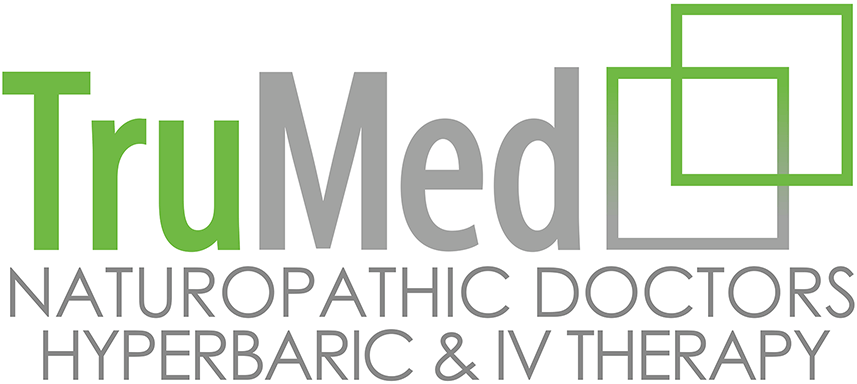UHMS Approved Hyperbaric IndicationsHyperbaric Oxygen Therapy in EdmontonIndications for Hyperbaric Oxygen Therapy vary in different countries.The indications approved by the Undersea and Hyperbaric Medical Society (UHMS) are very specific and limited.Our Naturopathic clinic in Edmonton works with both UHMS and non-UHMS indications for Hyperbaric Oxygen Therapy.UHMS Approved Hyperbaric Indications
This limited list represents conditions that may receive reimbursement from provincial health plans in Canada. Our Naturopathic clinic in Edmonton works primarily with Arterial Inefficiencies, Delayed Radiation Injury, Compromised Grafts and Flaps and Sudden Sensorineural Hearing Loss in terms of UHMS indications for Hyperbaric Oxygen Therapy. 1. Air or Gas EmbolismGas embolism occurs when gas bubbles enter arteries or veins and can be an Arterial or Venous gas embolism (AGE or VGE). The most common causes reported in the literature are iatrogenic, the embolism occurring as a result of invasive medical procedures or surgery. Less commonly, air embolism occurs in divers undergoing rapid decompression. Manifestations of arterial gas embolism include loss of consciousness, confusion, focal neurological deficits, cardiac arrhythmias or ischemia. Venous gas embolism can manifest as hypotension, rapid breathing, pulmonary edema or cardiac arrest. USN Treatment Table 6 is used for AGE or VGE. 2a) Carbon Monoxide PoisoningCarbon monoxide (CO) poisoning is one of the most common causes of poisoning in the world. Gas/propane grills and stoves, house fires & vehicle exhaust are common sources. CO competes with oxygen for each of the four oxygen binding sites on hemoglobin. CO has a very high affinity for hemoglobin, approximately 200 – 250 times that of oxygen; because it displaces oxygen in the blood and reduces the oxygen carrying capacity, it leads to relative anemia. Acute CO Poisoning Symptoms: Fatigue, Chest pain, Shortness of breath, Loss of consciousness, Dizziness, Nausea/Vomiting, Headache & Confusion First Line treatment is 100% high flow oxygen. If Hyperbaric Oxygen Therapy is not available, then 100% oxygen until CarboxyHgb is normal (<3%) and symptoms have resolved, after about 6 hours. Our Naturopathic Doctors have worked to a limited extent with support after CO poisoning with Hyperbaric Oxygen Therapy at our Edmonton office. 2b) CO Poisoning Complicated By Cyanide PoisoningCO and Cyanide (CN) frequently occur simultaneously due to smoke inhalation with fires. Hydrogen cyanide is a gaseous product of the combustion of plastics, wool, silk, synthetic rubber, polyurethane, and asphalt. CN inhibits cytochrome oxidase (electron transport chain) and effectively stops energy production in the cell. Tissues that are most susceptible to an interruption of the electron transport are those highly dependent upon aerobic metabolism, such as the heart and central nervous system. Cyanide antidote kit (Amyl nitrate, Sodium nitrate, Sodium thiosulfate) or Cyanokit (Hydroxocobalamin - Vitamin B12!!!!!!) Normobaric oxygen should be started immediately as it has proven to be an effective treatment. Hyperbaric Oxygen Therapy is recommended particularly when supportive measures and other cyanide antidotes fail. 3) Clostridial Myositis & Myonecrosis (Gas gangrene)
Clostridial Gas Gangrene is a highly lethal necrotizing soft tissue infection with a 20 - 30% mortality rate. Inoculation of Clostridia into tissue needs to occur: Post- traumatic, war injuries, car crashes, post-op. Signs and symptoms occur rapidly 1 to 6 hours after injury, and can advance at a rate of 6 inches per hour. Patients are typically in excruciating pain. Treatment is is a three-pronged approach: Antibiotics, Surgery (Aggressive surgical debridement) & Hyperbaric Oxygen. Hyperbaric Oxygen Therapy creates free radicals and clostridia and other anaerobes which do not have enzymes that fight free radicals. Whereas, aerobic organisms, have free radical defenses so they can live in oxygen environments. 4. Crush Injury, Compartment SyndromeOther reperfusion injuries are also categorized with these. Tissue ischemia leads to cell damage and death. Unfortunately, restoring blood flow (reperfusion) causes a second series of oxidative events producing additional injury. Hyperbaric Oxygen reduces the secondary, indirect component of injury. Reperfusion injury occurs when circulation is compromised in compartment syndrome & crush injury. Hyperbaric Oxygen Therapy reduces reperfusion injury by preventing lipid peroxidation, neutrophil adherence, and free radical buildup 5. Decompression sicknessDecompression Illness (DCI) results from a sudden reduction in ambient pressure resulting in the formation of inert gas bubbles in blood or body tissues usually from underwater or high altitude exposures. Type I – Decompression Illness - mild - skin and soft tissue pain, tingling, fatigue. Type II - Decompression Illness - severe - Symptoms involving CNS, respiratory or circulatory system and is potentially life threatening. Can be pulmonary, spinal or cerebral. Type I and Type II DCI are both treated with recompression, breathing oxygen increased pressure with “air breaks” usually with USN treatment table 6. 6a) Arterial inefficiencies: Central Retinal Artery OcclusionThe retina has the highest rate of oxygen consumption of any organ in the body. Central retinal artery occlusion is a rare emergency resulting in sudden painless vision loss. Patients particularly at risk include those with giant cell arteritis, atherosclerosis, and thromboembolic disease, a wide variety of treatment modalities have been tried over the last one hundred years with little to no success, with the exception of Hyperbaric Oxygen Therapy. Hyperoxygenation reduces the oxygen debt created during the occlusive event, reduces edema, limits the reperfusion injury and maintains oxygenation of the retina through the choroidal blood supply as choroid blood flow is not significantly affected by Hyperbaric Oxygen Therapy vasoconstriction. 6b) Arterial inefficiencies: Healing in Select Problem WoundsProblem wounds represent a significant challenge to our healthcare system. According to the UHMS, the best evidence exists for treatment of ischemic, infected (Wagner Grade III or worse) diabetic foot ulcers so this section is focused primarily on these. Many diabetic patients have changes in normal vasculature, from severe, large vessel disease to mid microvasculature changes that affect ability to heal. In general, the standards suggest if after 30 days of standard wound care including control of sugars, adequate nutrition and offloading of pressure, and have a wound that is a Wagner Grade 3 or greater, then one can consider treating with Hyperbaric medicine. Our Naturopathic clinic does use Hyperbaric Oxygen Therapy for select problem wounds as long as a wound care clinic is also involved - as some patients require dressing changes, debridement and antibiotics which we do not do at our Edmonton office. 7) Severe Anemia
Exceptional blood-loss (anemia) occurs when so many red blood cells are lost that oxygen delivery to the tissue is compromised. This is relevant in particular for patients that cannot be treated by transfusions eg. inability to cross match blood. Hyperbaric Oxygen can temporarily support life without hemoglobin. 8) Intracranial AbscessHave an average mortality rate of 20% and are often numerous and may not be amenable to surgical drainage. Furthermore, antibiotics don’t always reach into brain abscesses. Typically pediatric oncologic, diabetic & immunocompromised patients. With Hyperbaric Oxygen, high oxygen levels directly kill anaerobic bacteria, and allow white blood cells to work fighting infection. Among the published cases, mortality declines from 20% to 2%.  Hyperbaric Oxygen in Edmonton9) Necrotizing Soft Tissue InfectionsNecrotizing soft tissue infections involve bacterial invasion and may stem from diabetic foot infection, surgical wound infection, puncture wounds and trauma. Necrotizing infections are often associated with reduced body defenses from alcoholism, drug abuse, malnutrition, underlying systemic disease, such as diabetes, cancers and vascular disease. These infections ofte have foul, smelly discharge. Oxygen is bactericidal (bacteria killing) and bacteriostatic (bacteria stopping) and Hyperbaric Treatment increases the rate at which leukocytes produce toxic radicals for microbial killing. Adjunctive Hyperbaric Therapy (2.0 - 2.4 ATA) is apparently very cost effective when combined with antibiotic and surgical treatment. 10. Osteomyelitis (Refractory) Chronic, refractive osteomyelitis is a recurring bone infection despite appropriate medical and surgical interventions of antibiotics, drainage, or removal of sequestrating bone usually in an immunocompromised host. Hyperbaric Therapy increases oxygen tension in infected tissue including bone, to normal or above normal levels. Adequate oxygen for fibroblasts promotes healing. Also, osteoclasts that remove dead bone need oxygen to function, and the increased oxygen tensions allow growth of new blood vessels. As mentioned numerous times already, Hyperbaric Oxygen is bacteriostatic and bacteriocidal for the infection. Hyperbaric Oxygen Therapy is usually done after 4-6 weeks of ineffective treatment. 11.Delayed Radiation Injury (Soft Tissue & Bony Necrosis)Chronic (late effects) of radiation is usually what's treated with Hyperbaric Oxygen Therapy. Etiology of Delayed Radiation Injury involves damaged stroma, microvasculature, ultimately results in hypocellularity, hypovascularity and hypoxia. Hyperbaric Oxygen is helpful for delayed radiation injury because it promotes angiogenesis, increases growth factors, reduces fibrosis and induces and mobilizes Stem Cells and of course improves tissue oxygenation. Mandibular Radiation Necrosis (ORN), Chest Wall/Breast Necrosis, Radiation Cystitis, Radiation Enteritis/Proctitis are common examples. Hyperbaric Oxygen Therapy is given 5 days/week for 6-8 weeks. Our Naturopathic clinic in Edmonton does work with Delayed Radiation Injury - Hyperbaric Oxygen Therapy is the only Naturopathic modality we are aware of that can powerfully impact this difficult to treat phenomenon. 12. Compromised Grafts and FlapsSkin grafts immediately become ischemic & hypoxic on harvest and are susceptible to ischemia reperfusion injury. The recipient bed must be healthy enough to accept and nourish a graft. Skin grafts require about 3 days to start neovascularization and flaps are susceptible to failiure for the first 23- 72 hours. Flaps and patients at high risk due to previous failures, radiation, and high number of lymph node dissections are good candidates for adjunctive Hyperbaric Oxygen Treatment. Oxygen availability is critical to skin grafting success and Hyperbaric Therapy increases tissue oxygen levels in hypoxic and ischemic wounds. Our Naturopathic Doctors proudly receive referrals from surgeons in the Edmonton area for Hyperbaric Oxygen Therapy for patients both prior to and following surgery - with superior healing outcomes. 13. Acute Thermal Burn InjuryEdema, dermal ischemia and infections (White Blood Cell killing is impaired following thermal injury) are the major factors related to Thermal injury all of which are enhanced by Hyperbaric Treatment. Hyperbaric Oxygen Treatment minimizes edema and provides oxygen to deprived burned areas and reduces conversion of partial thickness wounds to full thickness wounds. Hyperbaric Treatment also results in less grafting. Hyperbaric Oxygen with thermal injury shortens hospital stay by 25-30% and reduces mortality 20-30%. 14. Idiopathic Sudden Sensorineural Hearing Loss
This is the newest UHMS indication for Hyperbaric Treatment: sudden, one-sided hearing loss of 30 dB within 3 days over at least 3 frequencies accompanied by ringing and vertigo. Multiple studies have been done with no consensus for the treatment. A recent Cochrane review noted that Hyperbaric Oxygen Therapy was the only modality that produced positive results. We are experienced using Hyperbaric Oxygen Therapy for Sudden Sensorineural Hearing Loss - with mixed success in the Edmonton patients we have done this with. Need Hyperbaric Oxygen?
|
||||
